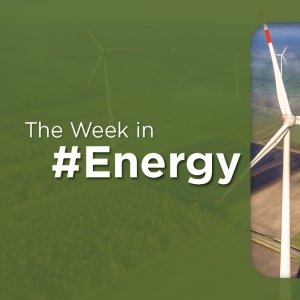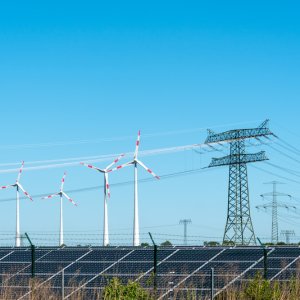
Short and Medium-Term Utility Scale Solar Opportunities
 By Perla Velasco | Journalist & Industry Analyst -
Tue, 02/28/2023 - 16:21
By Perla Velasco | Journalist & Industry Analyst -
Tue, 02/28/2023 - 16:21
According to a report by the National Renewable Energy Laboratory (NREL), Mexico’s national technical power potential could satisfy the electricity demand in the country a hundred times over. Nonetheless, clean energy infrastructure needs to be developed further, and solar energy remains Mexico’s greatest prospect in terms of potential power and economic viability. Eyeing short and medium-term opportunities is therefore key, though a slew of obstacles makes developing solar projects.
Mexico not only has great potential in terms of radiation resources but also boasts geographic advantages to become a key international actor to lead industrial renewable energy. However, the government has shifted from the 2014 Energy Reform, which boosted private energy development, back to a state-centered model spearheaded by CFE, which has created hurdles for private energy players. Rafael Sánchez, Division Manager, OCA Global, highlights that opportunities and challenges coexist in any environment and that adapting to this is crucial. “Players have to know that the context is part of any development and you have to stick to regulation. In this sense, optimization plays a key role. With better technology, we will gain greater competitive advantages.”
Despite Mexico’s undeniable potential, regulation sends mixed signals to project developers. Sylvia Leyva, Senior Analyst Utility-Scale Solar North America, Wood Mackenzie, explains that Mexico’s government finally started to process more permits by the end 2022 after a long stagnation from regulator CRE. However, this move was accompanied by ambitious promises regarding publicly funded renewable power projects and other attempts to decrease the number of permits allowed for projects monthly.
Experts concur that this environment puts investors in a difficult position since changes in regulation have also resulted in additional costs for utility-scale project planning. The Mexican energy sector has seen its development obstructed by adverse policy, but companies showed commitment and resilience to further develop clean energy.
Despite problematic regulatory developments, experts expect the sector will continue to grow. Still, Leyva recognizes that developers must have adequate planning to mitigate risks. “Some projects end up spending more than the projected investment and when knowing the transmission problems that may lie ahead, good planning is important from the beginning,” she says.
Leyva added that the need for utility-scale solar development means its development cannot be stopped. When the perfect moment comes for developers to respond to demand once again in Mexico, it will all come down to which players have stayed tuned in to greenfield development and are therefore prepared to develop the necessary infrastructure.
According to Francisco Alcalde, Country Manager, Astronergy, Mexico’s opportunities still represent huge benefits. In light of supply chain relocations and an inevitable increase in the energy demand, Mexico’s private sector and offtakers demanding clean energy still have the chance to push for the development of larger solar projects, as well as support the development of other key power infrastructure. “I see that the government is beginning to push the market forward, too. Although regulation often represents obstacles since the risk that the rules will change suddenly is present, our grid does require further development. It is in this environment that the private sector can also cooperate and from there drive the development of the industry,” he explained.
Armando Gómez, Head of LATAM, X-ELIO, concurred that the market will inevitably demand clean energy, opening new opportunities. Yet for the time being, project developers in less-developed markets must adapt and face the challenges ahead. “There are issues ahead that cannot be addressed yet in Mexico because the market is in a different developmental stage. Many other countries have gone through a similar process where regulation is developed along the way. We could learn from international experience to accelerate the process, because our market could evolve and reach a higher level of discussion to bring in new technologies and develop more ways to optimize energy projects.” Despite the high demand for Latin American products, Gómez highlighted that the market still has ways to go regarding development, especially when it comes to regulation.
Solar has become a reliable, cheap and environmentally friendly renewable power solution globally. In 2021, solar energy accounted for 3.6 percent of the world’s electricity generation. Its capacity increased 22 percent from the previous year, reaching 190 GW, and this growth trend is expected to rise in the coming years.
















